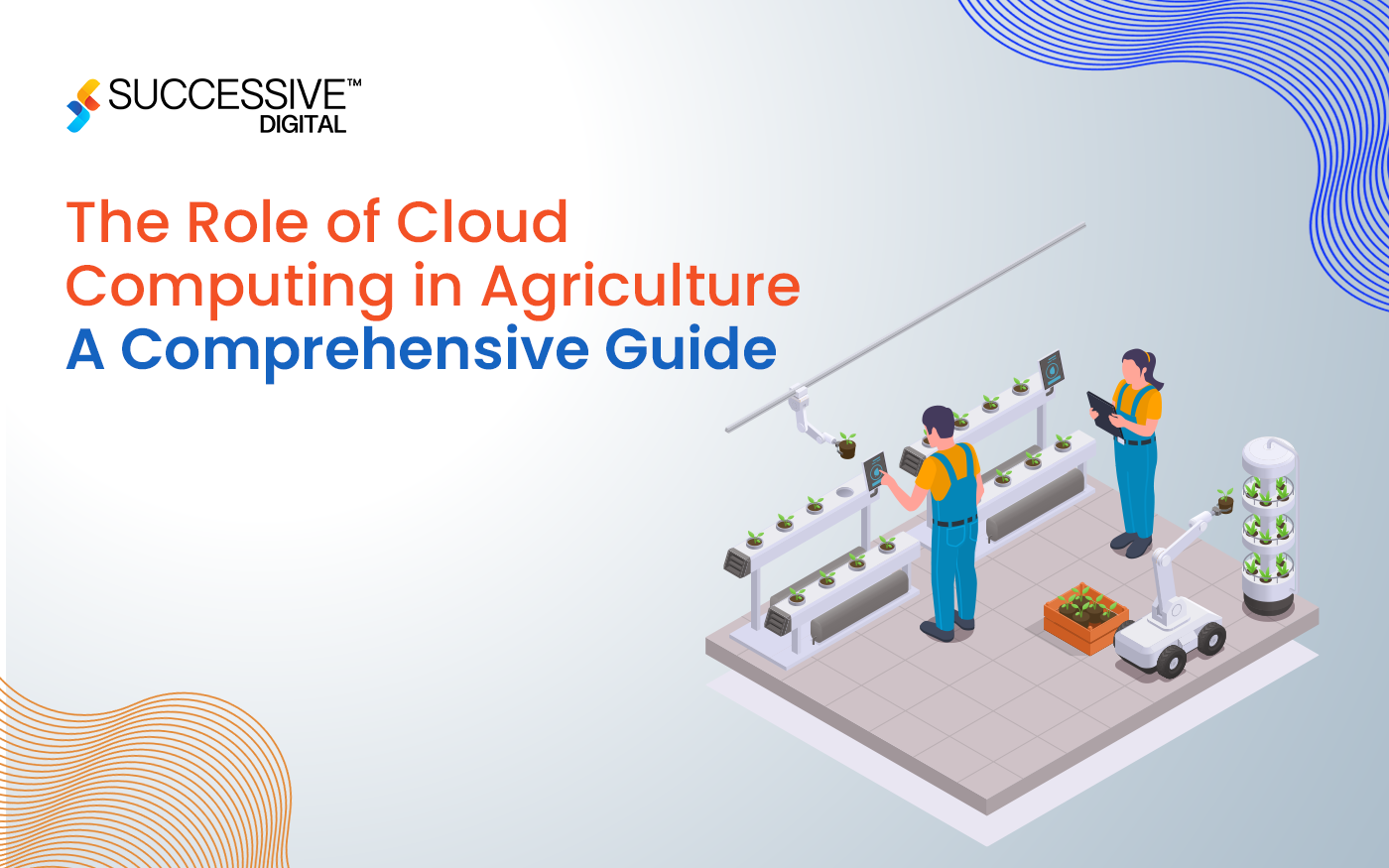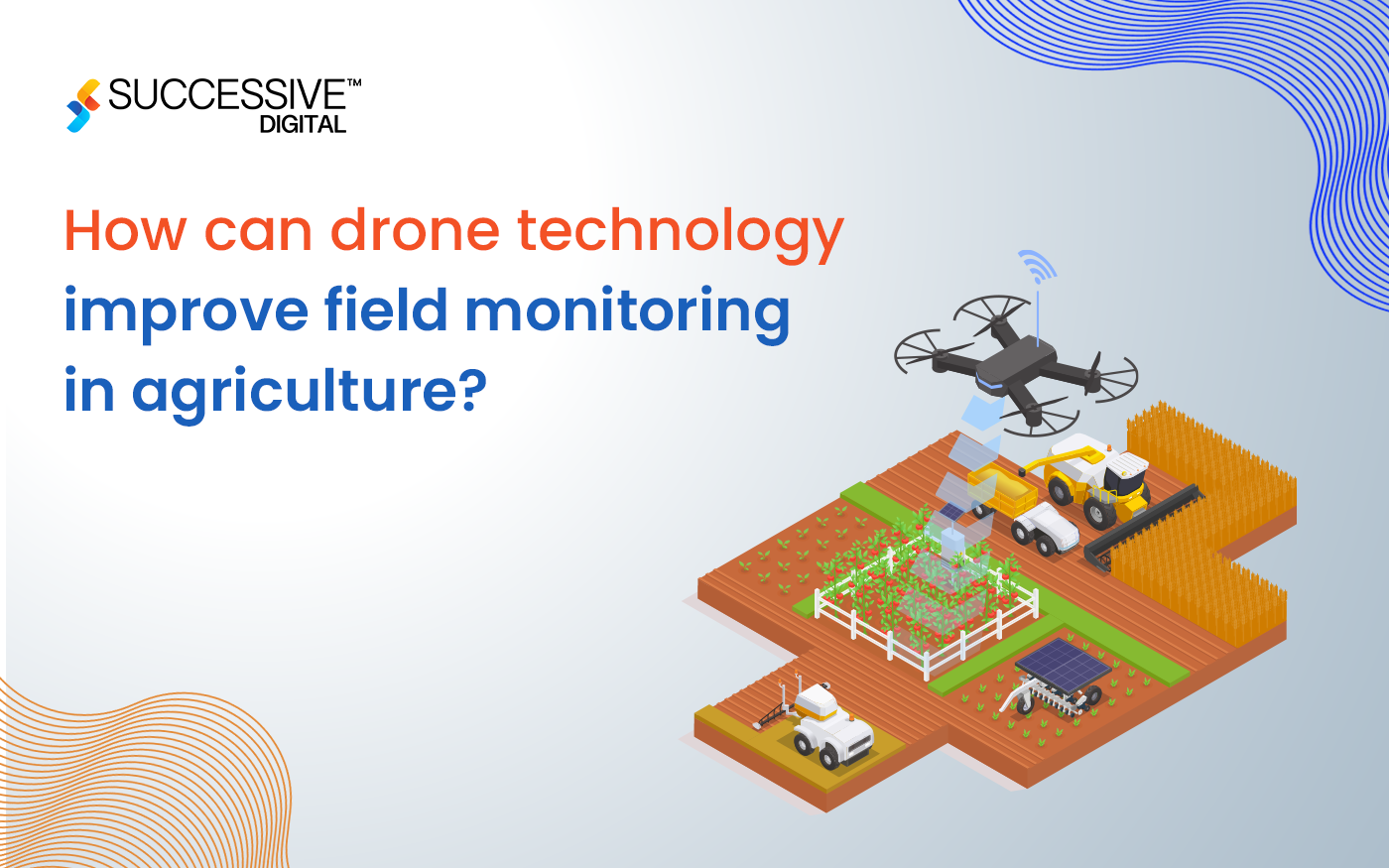Smart agriculture farming is creating a connected future of tech-driven agriculture practices that aim to reduce waste, improve productivity, and enable the management of a greater number of resources through remote sensing.
As per the report by Food and Agriculture Organization, we must produce 60 percent more food to feed a world population of 9.3 billion by 2050. However, traditional farming methods presents some challenges in order to meet the growing demand of agriculture produce such as adoption of technology for maintaining farm productivity and meeting community expectations while balancing the declining natural resources.
This is where smart farming comes in. Smart agriculture farming utilizes technologies like agricultural drones, robotics, IoT sensors, GPS, and farm management information systems to improve production efficiency.
Given the industry turmoil, there are many reasons to implement smart agriculture into commercial and local farming.
As advanced techs like the Internet of Things and AI are here to stay, smart agriculture can largely benefit farming stakeholders around the world, such as,
- Monitoring and collecting data for soil moisture
- Analyzing air temperature, air humidity, and sunlight intensity across multiple fields
- Improving the efficiency of water usage through smart irrigation
This article explores the potential benefits of Smart Agriculture Farming, defining it as the future of agriculture.
What is Smart Farming?
Smart Farming is a concept-based agriculture process focused on providing the agricultural industry with the modern infrastructure to leverage advanced technology for tracking, monitoring, automating, and analyzing farming operations.
This involves the integration of various technologies and devices to manage all farm operations, such as:
| Technologies | Devices |
| Big data | Robotics |
| AI/ML | IoT sensors |
| Cloud | Drones |
| Internet of Things (IoT) | Actuators |
| Edge Computing | Mobile Apps |
| Generative AI | Unmanned aircraft system |
Smart farming allows agronomists worldwide to better adjust to the uncertainties brought on by climate change, alleviate environmental damage, and enhance agricultural resilience. It allows the enhanced production with fewer resources, provides food security, and contributes to a healthy environment.
The above-mentioned devices and technologies, also known as digital agriculture technologies, are vital for feeding the world’s rising population while protecting natural resources and ecosystems. They help both urban and rural farmers make more informed decisions, improve resource use, and increase output.
Now, we’ll discuss the benefits that smart agriculture farming holds, but first, let’s understand the common challenges that farm stakeholders face.
Key Challenges of Traditional Farming Methods
There are many issues that farmers and agronomists face due to traditional farming methods. Out of many, climate changes and market fluctuations are, however temporary; these five are the ones impacting every season to creating a global financial impact:
- Pests: According to statistics, pests destroy more than 40% of global agricultural produce each year, totaling at least $70 billion. In some cases, crops develop pesticide resistance, which requires constant adaptation of pest management strategies. In severe cases, like locust swarms, pests can lead to food insecurity and economic instability in affected regions.
- Soil Quality and Irrigation: Soil deterioration affects more than 33% of the world’s soil, lowering food output and costing an estimated $400 billion. Agriculture utilizes 70% of the world’s available freshwater, with 60% lost due to faulty irrigation systems, resulting in diminishing the overall agricultural output.
- Weeds: Despite advances in agricultural techniques, weeds drastically impair crop yield and quality. Around 1800 weed species diminish plant output by 31.5%, causing an annual economic loss of approximately $32 billion. Weeds compete with crops for nutrients, water, and sunlight, whereas.
some weeds are even allelopathic, releasing chemicals that slow down the crop growth. However, weed control methods can be labor-intensive and time-consuming, creating a need for tech-enabled weed management systems.
- Labor Shortage: The issue of labor scarcity affects agricultural produce worldwide, including in regions such as India, the United Kingdom, and the United States. The shortage of farm labor can lead to reduced food production, crop wastage, and delays in critical farming operations, ultimately impacting the availability and affordability of food for consumers.
- Field Management: Field and crop management is a growing challenge that is closely related to the above-mentioned challenge of labor shortage. Farmers were a mainstay in traditional farming methods, continually checking the soil and crop conditions. However, as farms have grown in size, farmers have found it increasingly difficult to supervise the entire field or crop patches on their own. This is especially true in micro-farming, where several remote parcels of land can be farmed for different crops, necessitating varied conditions and precise soil and water management.
How Does Smart Agriculture Farming Solve These Challenges?
Smart farming processes utilize farm management systems and remote sensing to reduce waste, increase output, and manage more resources. Additionally, using location-specific precision farming practices, smart farming maximizes crop production and minimizes input costs while reducing environmental and health risks.
Here are the potential benefits of smart agriculture farming that solve the common challenges discussed above.
Increasing Yield Quality and Produce
Pests and reduced soil fertility are common causes of poorer crop yields in traditional farming systems. However, accurate and early pest identification and treatment are critical for minimizing crop loss and reducing the need for chemical pesticides.
With the help of smart farming methods, agritech software solutions capture data such as weather reports, historical pest activity, and high-resolution images captured by drones or satellites, making them readily available for farmers to make informed decisions on time.
Additionally, agronomists and farmers can use machine learning models to predict pest invasions and identify pests in the field.
This way, farming stakeholders benefit largely from smart farming technology using precision agriculture techniques. Precision agriculture is a farming management system that uses modern technologies to optimize activities such as planting, irrigation, and crop scouting. It is among the most revolutionary smart agriculture farming benefits.
Reducing Cost
Farming is a capital-intensive sector, and farming companies frequently pay high prices for inputs like seeds, fertilizer, and fuel. Smart farming technologies can help save money by enhancing input management and decision-making.
Even reports say that Artificial Intelligence (AI) and Precision Agriculture (Ag) have the potential to reduce annual agricultural operating costs by more than 22% globally.
Agritech software development companies builds applications that provides real-time information and help farmers analyze and understand the best time and weather to plant, to irrigate, and identify what inputs to use, without wasting resources and burning money.
Strategic investment in smart agriculture farming technology can help the agriculture industry become more productive and less reliant on labor.
Data Collection and Analysis:
With the help of smart farming applications, agronomists and farmers can easily collect data about their crops, soils, and weather conditions using an integrated network of technologies.
This data can be utilized to make better farm management decisions, such as,
- Yield maps can determine which portions of a field produce more or less than others.
- Sensors can help farmers predict and react to conditions quickly and offer multifaceted analysis of farming processes.
- Smart greenhouses can optimize plant growth by regulating heat, humidity, and light, providing required air quality monitoring and ventilation.
- Irrigation systems can help farmers access and track moisture levels in the soil through these irrigation systems.
Farmers can use this data to change their inputs and management practices accordingly.
Furthermore, data gathered by smart farming technology can be used to enhance crop breeding programs. Farmers can produce new crop varieties that are better suited to specific scenarios by researching the parameters under which a particular variety performs well.
Less Human Errors
Smart agriculture farming automates most farming techniques and reduces the need for manual efforts, resulting in fewer human errors that are bound to happen when dealing with large farmland areas.
Smart farming techniques do this through sector control methods by precisely mapping the field, which is then used to direct agricultural machinery through agritech software. The advanced technologies guarantee that crops are planted accurately and at the proper depth, reducing seed losses due to wrong planting. By using smart farming technology such as section control, farmers can also protect crops from herbicides and pesticides.
As a result, both local and commercial farming stakeholders can save money and safeguard the environment by only automating the input of water, pest, and fertilizers where they are needed, at the most suitable time, reducing errors.
Building a Connected Future of Agriculture
Smart farming powered by AI and Precision Agriculture could introduce the most meaningful agricultural innovations since the tractor 100 years ago. It can help adjust farming practices in real time to climatic shifts, ensuring optimal crop health and yield.
Farmers, often faced with the need for labor-intensive machinery to produce better-quality crops, can find solace in the fact that autonomous technologies are here to help. These technologies can effectively address manpower scarcity, significantly increasing the possibility of higher agricultural yields.
Smart agriculture farming can help the farming sector meet the ever-increasing demand for farm produce while also helping farmers improve efficiencies through reduced input costs.
To contribute to the digitally connected future of smart agriculture farming, Successive Digital builds agritech software solutions compatible with all sorts of smart agriculture devices to achieve seamless collection, analysis, and actions based on data.
With our customized farming solutions for both commercial and local farming, we empower agronomists and farming management organizations to perpetually monitor and fine-tune every growth stage in the farm. From seed selection to harvest and beyond, our software solutions ensure optimal crop health and yield, leading to increased efficiency and profitability.












